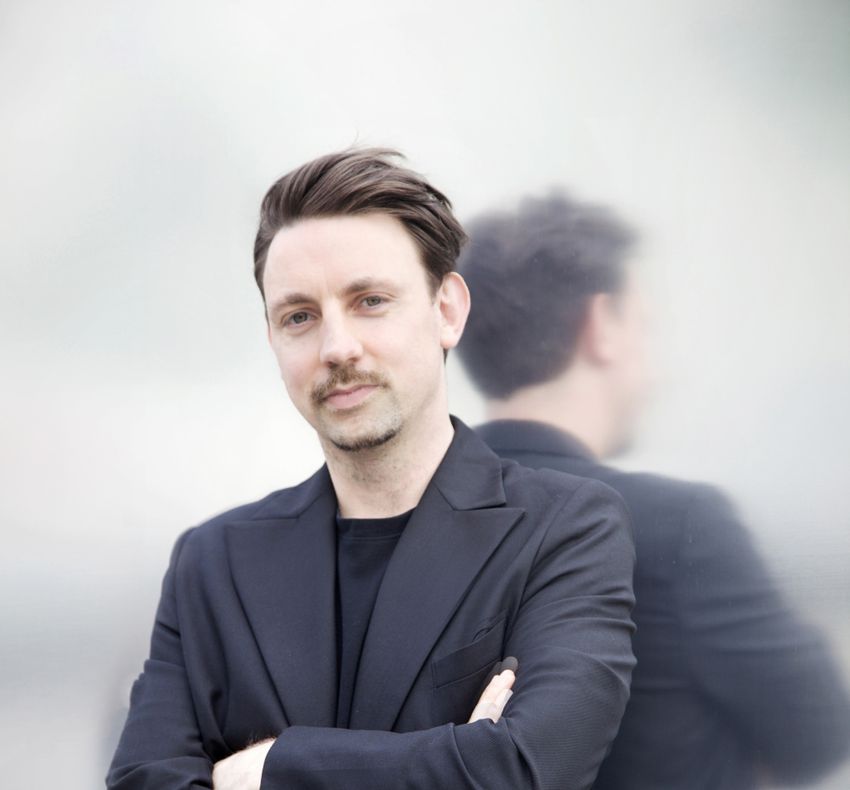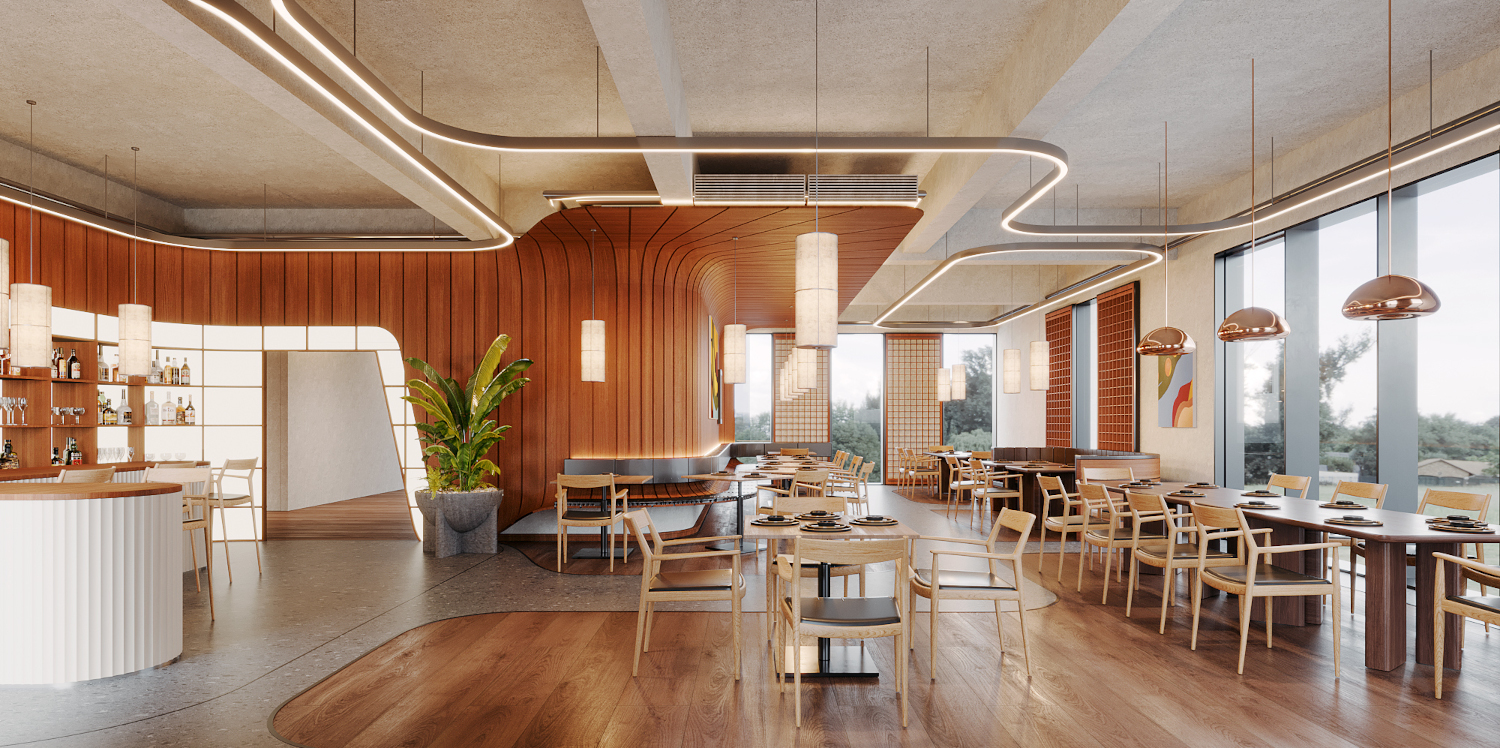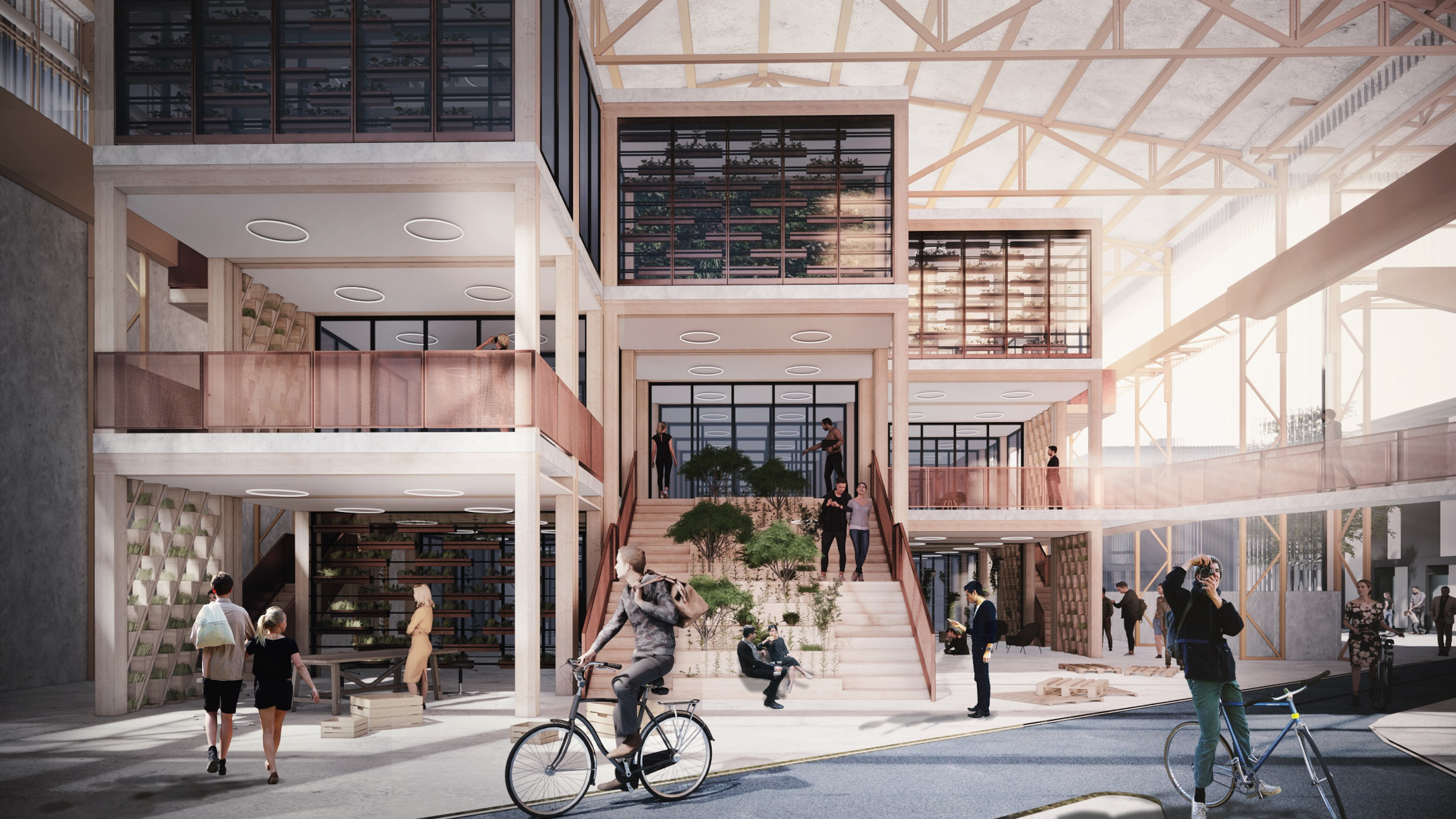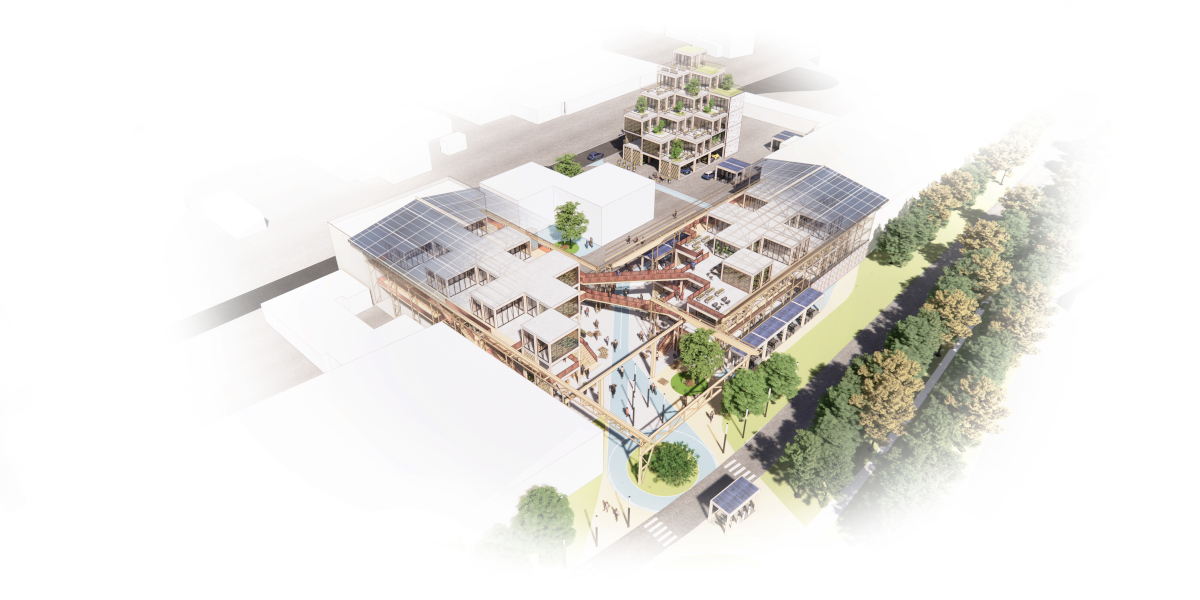Sustainability
Wibke Behrens: “Art is not there to present solutions”
Ever since Joseph Beuys introduced the sustainability discourse to art …

What will the city of the future look like? What role do circular concepts and the reuse of brownfield sites and disused industrial districts play in this? The architecture and design firm Beta Realities is looking for solutions. An interview with Managing Director Marvin Bratke.
CCB Magazine: Hello Marvin, you are an interdisciplinary team of entrepreneurs, architects, urban designers and project developers. What makes you different from other architecture firms?
Marvin Bratke: Beta Realities is an architecture and design firm. Our services focus on architecture, interior design and product design, which also includes urban planning and the development of software applications. System design is clearly at the heart of our work.
CCB Magazine:How long has your company existed and who came up with the idea of founding it?
Marvin Bratke:I have been working as a practicing architect for fifteen years and worked in leading international architecture firms before we founded the company. In 2021 we founded Urban Beta as a construction technology company and at the beginning of last year I founded Beta Realities together with my business partner Paul Clemens Bart. We are currently ten architects, designers and planners with studios in Berlin and New York.
In the future, we will inevitably have to deal with the issue of circularity due to the lack of resources. We can see that this is already leading to an integral transformation process in the construction industry. Beta Realities deals with the entire life cycle of building elements and materials and looks for ways to reuse them
CCB Magazine:There are many architectural firms in Berlin. According to a survey by the Federal Chamber of Architects, the energy crisis and the poor economy have forced many architects and urban planners to pause or even postpone projects, with around half expecting the situation to deteriorate by the end of the year. What is the best way for a young company like yours to position itself in this situation, how do you stand up to the competition?
Marvin Bratke:We see ourselves as inventors at heart and bring this innovative approach to the company. Our interdisciplinary approach sets us apart from traditional architects. We are a well-coordinated, international team and carefully combine technology, ecology and architecture to find solutions for the greatest challenges of our time and society.
CCB Magazine:What is the focus of your work? Was it clear to you from the start what you wanted to focus on, or did the range of services you offer only emerge in the course of the projects?
Marvin Bratke:We are always in Beta mode and are constantly evolving. We challenge conventions and question the norm in order to leave traditional disciplinary boundaries behind us. Our architecture aims to unleash the full potential of people and nature. As a team, we design architecture, interiors and products with transformative impact, a participatory approach and positive impact. Together we design for the future and help our clients, users, experts and the public to shape it positively. Our project experience spans many continents internationally: We plan and realize office buildings, hotels, residential and commercial buildings, cultural facilities, high-rise buildings, museums, installations and products with a high standard of design, innovation and circularity.




CCB Magazine:One of your services is strategic consulting. This also involves thinking about future technologies in the design process. That sounds like a circular argument. How can I think about something that is still uncertain, that is still in the future?
Marvin Bratke:Frei Otto already coined the term architecture as a presumed future. Our buildings do not attempt to answer all the questions of the future. We try to design open systems that can be adapted to new needs in the future. Building construction in Germany is over-regulated with many standards that are driven by manufacturers. We advocate a return to simpler and more comprehensible construction. High-tech in planning and low-tech in construction, so that in future buildings can be modified not only by architects, but also by the users themselves. Many of the buildings we design serve as a kind of test laboratory. We try to think about the changeability of buildings. There is now also a new building type for this, Building Type E, which is designed precisely for this flexible, experimental approach.
CCB Magazine:Beta Realities promotes innovative, urban ideas and concepts, such as an airport that is also a community center. There is talk of inclusive, unconventional and multidisciplinary approaches. But which of these ideas have already been put into practice and are not just on the drawing board?
Marvin Bratke:Although we are a very young office, we are currently working on the realization of several circular planned buildings and renovations. In addition, we have already successfully constructed three circular timber buildings with our BetaPort buildings, the last building being a school extension for the Leipzig International School in collaboration with Urban Beta and graadwies. This year we will complete two projects, an office building in Düsseldorf and a boutique hotel in China near Shanghai. Unfortunately, we are not yet allowed to talk about many other projects in the pipeline, but we will be able to publish them in the coming years.
A lot is being built in Berlin, which does not necessarily do justice to the intended use of the 400,000 residential units per year. There is a lot of vacant space that is simply held as a speculative investment. We need to focus on converting buildings, especially commercial properties, which are increasingly standing empty
CCB Magazine:In the city of the future, sustainability, circularity, a high quality of life and affordable living space should flow together. However, Berlin in particular has been experiencing a persistent housing shortage for years. How can this problem be solved?
Marvin Bratke:A lot is being built in Berlin, which does not necessarily do justice to the intended use of the 400,000 residential units per year. There is a lot of vacant space that is simply held as a speculative investment. We need to focus on converting buildings, especially commercial properties, which are increasingly standing empty. A major focus will also be to examine what building mass we actually have in order to convert vacancies into living space and to create building systems that are so reversible, flexible and changeable that they can always be adapted to new needs. One of our conversion projects for instance deals with the renovation of vacant space into a sustainable boutique hotel.
CCB Magazine:The transport sector in Germany is lagging far behind when it comes to reducing emissions. But the building sector is not doing very well either. Just under a third of all emissions are attributable to it. This is about thermal insulation, but also about the building materials themselves. Is circular construction the solution?
Marvin Bratke:I personally believe that the proportion of new buildings in Germany is too high. Even though we continue to develop concepts for new buildings, we are in the active process of redesigning existing infrastructure, such as industrial estates, through sustainable and circular design. In a project in Kiel, for example, a monofunctional industrial quarter, we developed cultural locations for urban production from old factory buildings together with the graadwies office.



CCB Magazine:How many architecture firms are involved in circular construction? Is circularity even a serious thing in the construction sector?
Marvin Bratke:In the future, we will inevitably have to deal with this issue due to the lack of resources. We can see that this is already leading to an integral process of change in the construction industry. We are always looking at the entire life cycle of building elements and materials and looking for ways to reuse them. The challenge here, however, lies in very strict German legislation with regard to certifications, which usually results in a premium price. But in the future the prices of building materials that can only be used once will rise due to the scarcity of resources and, as in the packaging industry, we must also expect an increased user backlash. This is why we are focusing on on-demand approaches, which are made possible by reusable components such as those used in BetaPort.
CCB Magazine:Do you also use AI for your work?
Marvin Bratke:There are various areas where we use AI. For example, in the design process through visualizations and the choice of the right materials. We often use AR applications in our planning phases, i.e. pre-visualizations of our architectural design. We then see the buildings one-to-one and can walk through them with the help of VR glasses. This allows us to see potential errors in the design right from the start. We are also currently working on an internal assistant, a kind of BetaGPT, which is fed with all the information about our office. New employees can use it to find out all kinds of information and get help.
CCB Magazine:Where do you see Beta Realities in ten years' time? Is it important for you to grow?
Marvin Bratke:Growth should always be organic and healthy. We are currently in a constant growth process, despite the recession. This is mainly due to the fact that we operate and plan worldwide and can therefore close local gaps. In ten years' time, we hope to have made an inspiring contribution to the building revolution through the buildings we have realized.
Category: Innovation & Vision
Also a good read
Subscribe to our monthly newsletter!